AWFUL OR AWESOME?
Offal: Nose to tail, beak to claw – and beast to table
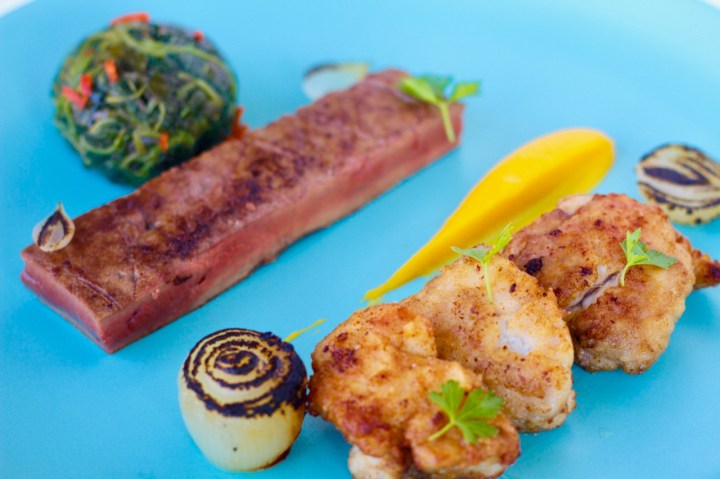
Fine-dining chefs globally are turning ‘organ meat’ into delicacies. We travel to Poland and Portugal, survey world trends – and ask one of KZN’s most creative chefs, Themba Mngoma, to share the head-to-tail traditions he grew up with. And give us a couple of easy recipes to inspire those who think offal is awful to consider that, perhaps, offal is awesome.
If you don’t like a particular item of food – for argument’s sake brains or liver, tripe or tongue, cow cheeks or bull testicles – it’s most likely because you haven’t been served them prepared the right way. I got that from a feisty 85-year-old foodie a dozen years ago and it stuck. Riveted itself in my brain. Because it made sense.
For her popular San Francisco Bay Area cooking classes, the appetiser-sized octogenarian would don her Ecole de Gastronomie Francaise Ritz-Escoffier apron, which had her name, Weezie, custom-stitched above the school’s motif. Apropos the subject at hand – offal – she said she had come to like sweetbreads while doing her culinary training in Paris.
“I’d hated them before. The very idea. And came to realise it was because I hadn’t tried them properly prepared.”
“Not like, not eat” was not an option in Weezie’s world. She would insist her students taste – if not necessarily finish – everything.
“It is often not the food one does not like, but the way it is prepared,” she stressed.
And thinking about boarding school liver, leathery and sinewy and almost impossible to cut let alone chew – how many years did it take me to try a delectable cut and change my mind?
And what about pork belly. Do you remember the first time you tried it? Now a delicacy with a price to match, it wasn’t so long ago that hardly anyone ate pork belly and it was offloaded as a cheap cut.
Then again, what when the boring old logical, staid, culturally conditioned, default-mode-driven mind shouts its resistance? Because the issue with offal is, if one is unaccustomed to eating something, it’s easy to simply block out the idea of trying. End of story.
So now – on to Poland.
I am sitting in a restaurant in Kraków, named European capital of gastronomy for 2019. My host and dinner companion is one of the country’s top chefs, Adam Chrząstowski. I am there – this was a while back – to learn what I can about Poland’s culinary renaissance.
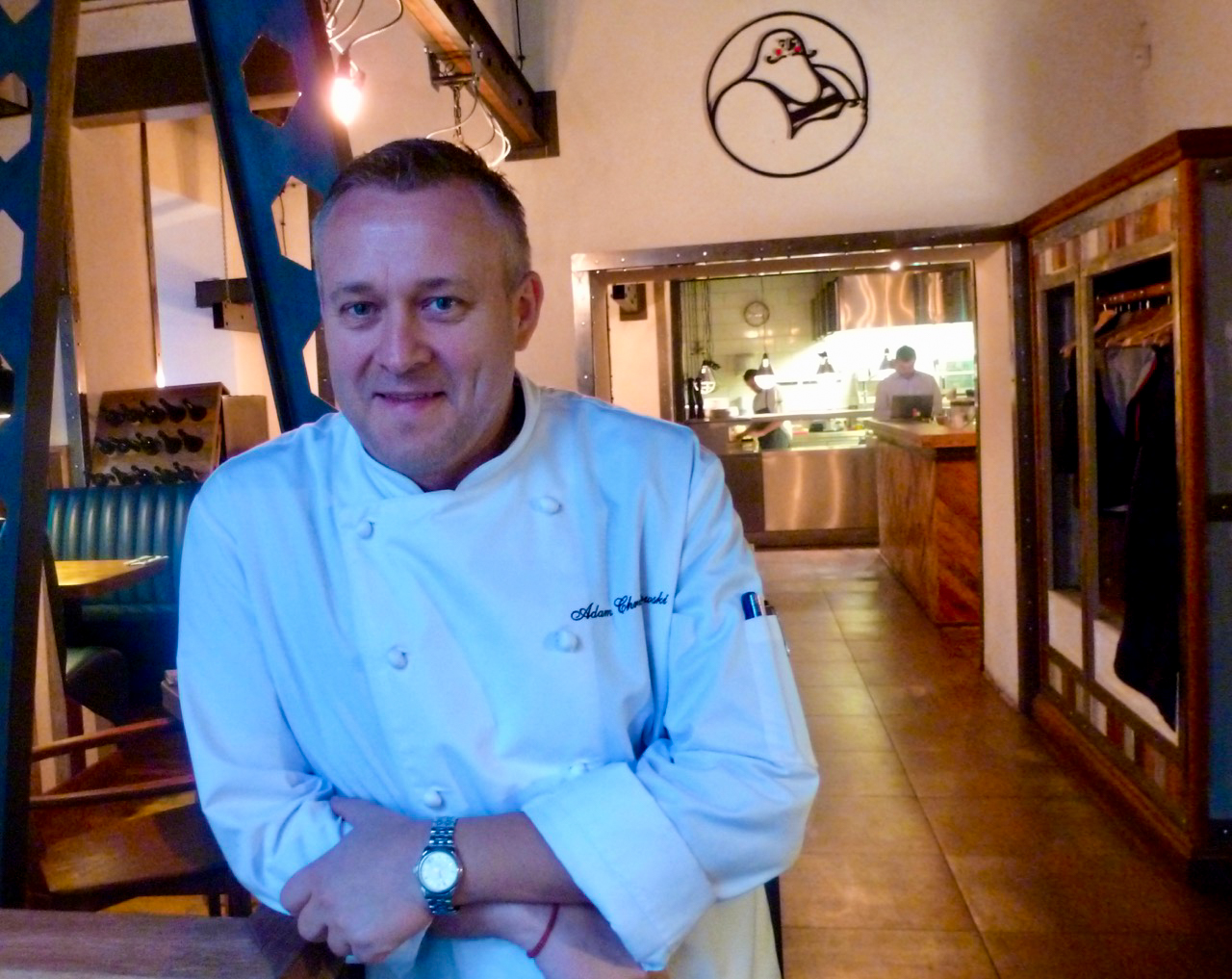
Polish chef Adam Chrząstowski. Photo: Wanda Hennig
I am interested in Poland because my dad was Polish. Of relevance to this story, he fed me chicken jelly from the “walkies” – chicken feet – he bought at the market in Durban when I was a child.
And when I was older, we had solidarity around the fact that my mother, whose roots were English and Scottish, liked the chicken’s breast. No competition for the heart, the lungs, the liver, the neck, the parson’s nose, chewing the soft ends of the bones, the wings. All the prime bits.
He liked tripe. He liked tongue. He liked good, exotic food, and cooking it it, too. He wasn’t squeamish. In a very old “Polish Cooking” cookbook that’s been on one bookshelf or another forever, there are recipes for things like calf’s brain croquettes, calf brain soup, fresh calf’s tongue, calf’s lungs and – merrily – beef tongue à la polonaise.
All this means – I was given some grounding in offal.
Back in Krakow we’re in a meat restaurant called Ed Red talking about meat.
“We use only local Polish beef – and from no more than 100km away,” Chrząstowski says of the food philosophy of the eatery, recognised by Slow Food Poland. He knows all the farms, the farmers – their animals. He can show you pictures of some of them on his cellphone.
“We try to respect the whole animal. Our restaurant is dedicated to meat. We are for the protein lover,” he laughs warmly.
“People typically, traditionally, used the whole animal here in Poland,” he says. Good economics plus part of the circle of life. Sustainable. Respectful of the environment.
Chrząstowski – a charming man, thoughtful and easy to talk to – trained as a cook in Poland during post-World War ll Soviet/communist times when food was scarce, there was little in the shops, and heritage and tradition, let alone culinary creativity, got short (to non-existent) shrift.
Soon as he could he went travelling around Europe and elsewhere, worked in kitchens, discovered ingredients and cuisines he’d known nothing about. Got ideas and inspiration. Returned and he and a number of other visionary chefs have transformed Poland into a culinary destination of gastronomic innovation and regional cuisines.
It took a while, he said, for people to recover from hard times and austerity. Then they started becoming interested again in food.
“Good food. Culinary traditions that got lost are being revived.”
Foraging. Discovering. Creating. Reinventing.
What would I like to eat, he asks at some point.
“Something local. Traditional. Whatever you suggest,” I reply. He created the menu. Let him decide.
I feel my insides blanch when the waitress puts down a plate and Chrząstowski tells me the five items I’ve been presented with are all from a young calf (veal):
-
There’s brain “made the Polish way, cleaned in water and vinegar then roasted with egg and parsley. It was a classic bar snack (served with vodka) before World War II that we’re reviving,” he says;
-
There’s cheek with grated horseradish served on pumpernickel bread (a classic recipe, he says – his grandmother always served tongue with horseradish and rye bread);
-
There’s sweetbread (thymus), prepared with parsley and mayo;
-
There’s tongue, with radish and chives, on rye bread;
-
And then there’s liver, with pear, on brioche. Traditionally, he says, you have liver with fruit. The sweet to offset the sour. Hence his liver with the in-season pear and some onion.
Verdict? I admit, the thought of eating brains threw me. Thymus too. But – old Weezie was right – I’d eat Chrząstowski’s brains again. And the sweetmeats. In terms of flavour and texture, a hard act to follow.
Talking thymus. Or sweetbread, to be less literal.
And thinking “offal delicacies” such as those I ate with Chrząstowski and elsewhere in Poland and being served at upscale dining establishments far and wide. Offal way beyond foie gras – and isn’t it weird how people will pay hefty prices to eat the liver of a duck or a goose that has been force-fed and otherwise inhumanely treated, then not eat the liver of a plain old butchered sheep or cow?
“Tell me your experiences with offal,” I say, now back home.
I am speaking with Chef Themba Mngoma, my go-to KwaZulu-Natal Chrząstowski counterpart, in a quiet corner of Vigor & Verve café on the Durban beachfront. Having been thinking about culinary heritage and traditions South Africa-style. And how malva pudding and bobotie and koeksisters and milk tart have for so long been presented as the iconic South African options.

Chef Themba Mngoma with beautifully plated smoked salmon salad and pan-fried chicken liver – acceptable offal – at the Elangeni-Maharani, where he works. Photo Wanda Hennig
Although there is now “the smiley” along with shisa nyama, “which came about, along with the hostels, because there were no women to cook and men knew how to make a fire and throw meat on”, says Mngoma, right now a junior sous chef at Tsogo Sun’s Southern Sun Elangeni & Maharani complex.
But what about the kind of fine dining Chrząstowski and others are creating? At the other end of the spectrum from what you will find at Durban’s Bovine Head Cooking Market, where you can have a chunk of meat sliced from a cow’s head being boiled in a huge pot by a woman wielding an axe. Served with a basic flour and water dumpling and a little mound of salt to dip it in. A scene which, in one form or another, one finds replicated in less affluent community markets around the world.
When our paths first crossed, Mngoma had been mentored of the late, legendary Durban restaurateur Martin Lombard. He has, since then, been head chef at Little Havana, Umhlanga; at Stephanie’s in Pretoria; at Roca Restaurant at Dieu Donné wine estate, Franschhoek. During his three years in London at The Soho Hotel, he travelled to Scotland to eat haggis (sheep’s heart, liver and lungs) “so hyped as a delicacy – and I could go to Scotland and Ireland on my Schengen visa. And yes, it was tasty”.
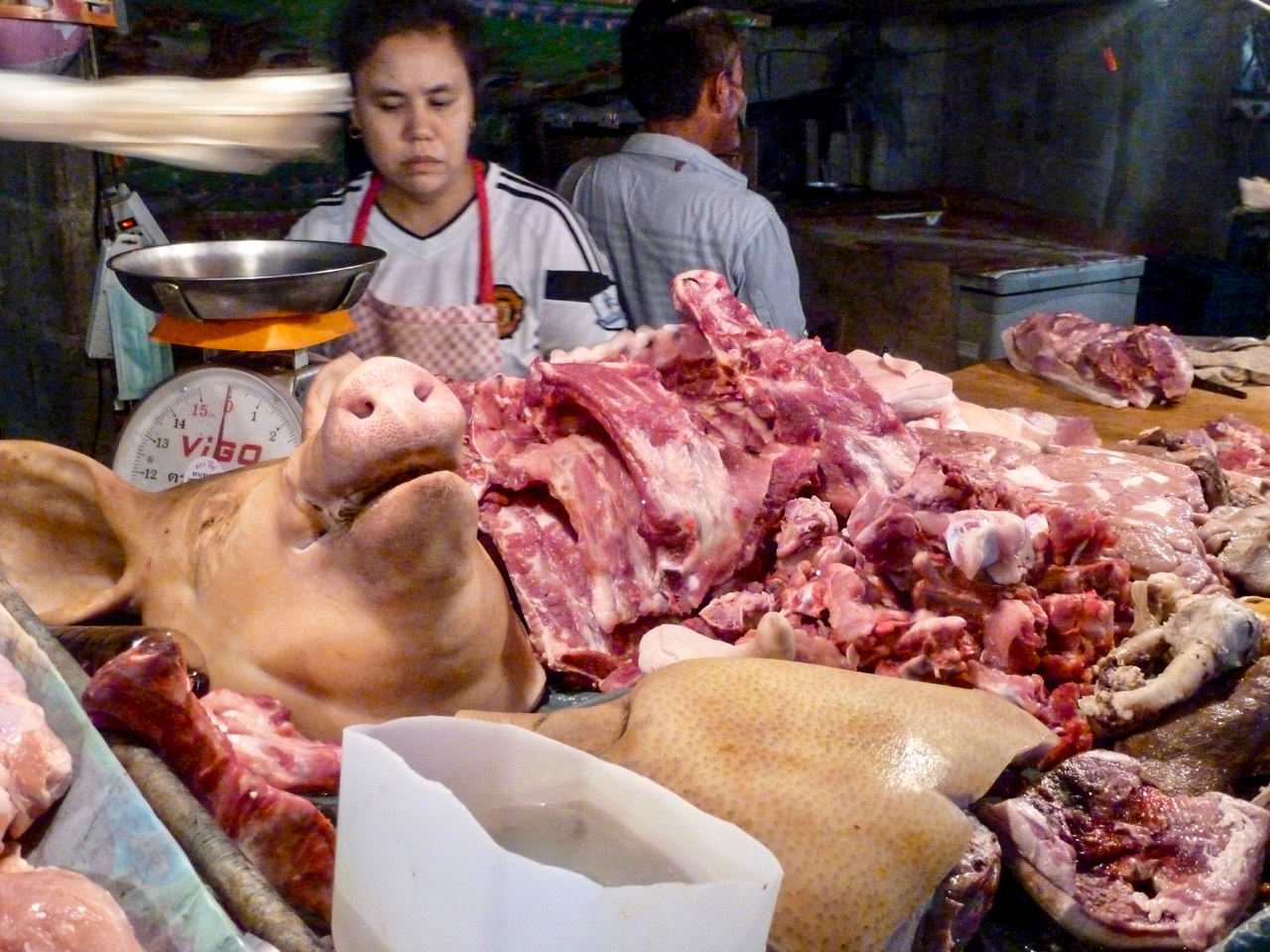
A market in Thailand. Photo: Wanda Hennig
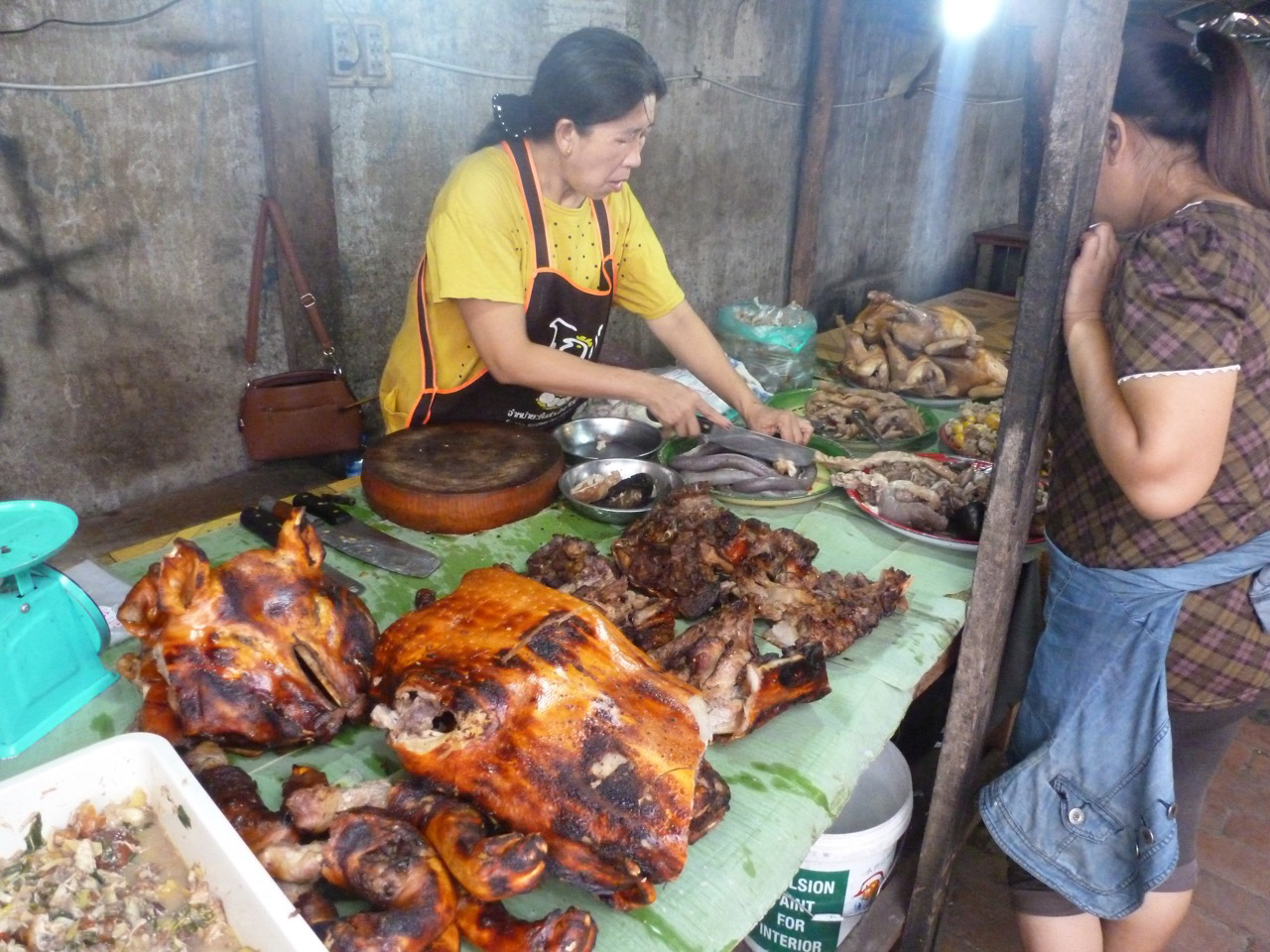
A market in Laos. Photo: Wanda Hennig
In London he was surprised when he saw tripe on a Marco Pierre White restaurant menu in Piccadilly.
“In South Africa it was always seen as poor people’s food. Also something of a delicacy as it took time to wash, wash, wash and prepare properly so we didn’t have it often at home.”
When he thinks of tripe, “I think of my granny and comfort food and cold winter nights”.
I wonder if it’s also perceived as comfort food in France, Italy, Peru, Japan, Vietnam, Germany, Nigeria, Pakistan – just a few of the countries with tripe as a speciality dish. And Portugal. If you’re anything of a culinary traveller and you go to Porto, you have to eat tripe – given that, going back at least a couple of hundred years, the citizens of Porto were called tripeiros (tripe-eaters).
“How I have come to think of offal meat,” Mngoma says, “is that it’s like dating a not-so-pretty girlfriend who has bags and bags of personality and who is a delight to be with. It might not look good. But there’s so much to appreciate and enjoy.”
Having grown up with the nose-to-tail culture that uses all the animal parts when any occasion – a wedding, a funeral, a young girl’s coming-of-age – calls for the slaughter of a cow (or other animal), he has an in-depth first-hand knowledge of offal.
It is the head of the family, he says, who gets to physically do the slaughtering, “arguably in a humane way”. There is a special spear reserved for such occasions.
“If you know what you’re doing there’s a spot between the skull and the spine. One hit right there kills the animal.”
The head is the prize, he says, and is reserved for the men. The tongue is the equivalent of a beef fillet – which, on the other hand, is not sought-after (the fillet, that is) “except by me, if I’m around”.
There are designated cuts for the women. And specific parts the blockmen who cut, cook, carve and serve up the meat are entitled to “steal”. There are leftovers, including one of the legs, for those who return the next day – euphemistically “looking for my hat” when they weren’t wearing one.
I take pictures in the Maharani lobby of Mngoma with a beautifully plated lemon-peppered salmon salad and pan-fried chicken livers (acceptable offal!), both Vigor & Verve menu dishes.
And then he goes home to create two quick, easy and inexpensive offal recipes for readers who might not have tried sweetbread (thymus) or ox’s liver. (See below: Chef Themba’s ox liver and hay-smoked sweetbreads with wild spinach (imfino), pumpkin puree and onion petals. If you make them, enjoy.)

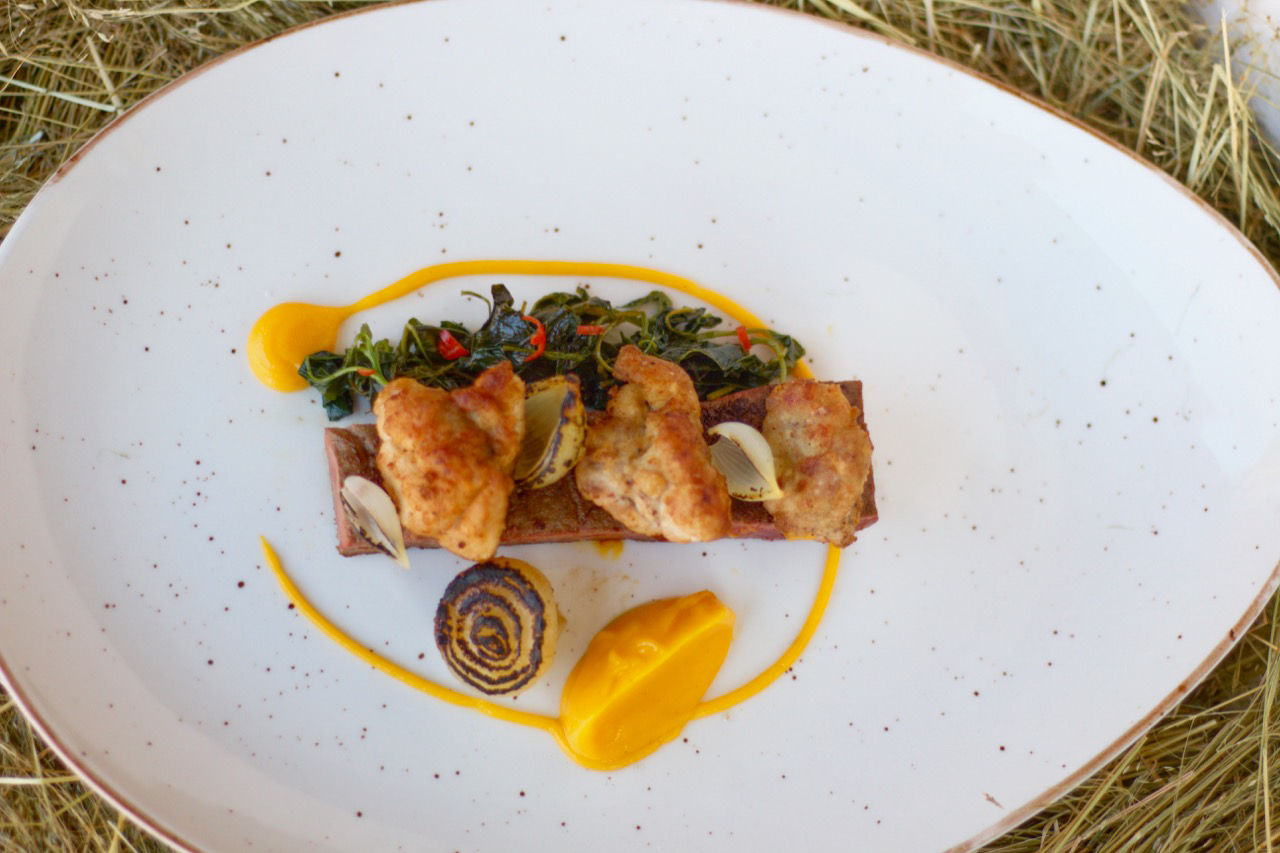
Researching this story opened my eyes to an international culinary world I discovered I had not even begun to dip into. The Wikipedia offal entry with its tentacles of interlinks had me, literally, gobsmacked.
Who knew about things like rooster testicle stew (Hungary), grilled sheep testicles (Lebanon), goat testicle and kidney takka-tak (Lahore, India). That the Norwegians around Christmas time torch a sheep’s head, remove the brain, salt it, dry it, then boil it for three hours then serve it with potatoes and mashed turnips. That they love fried or stewed brain in Italy. Specifically pigs’ brains in parts of Spain. In Kenya grilled goat and sheep kidneys are delicacies.
So much information it’s difficult to know where to go with it.
So here is a link to 10 Best Offal Recipes I found while digging around online. From the braised ox-cheek pie to the oxtail and tamarind soup, they mostly sound great, and very doable.
Maybe we’ll see the evolution of upscale African cuisine involving offal on fine dining menus at some point. Regardless, it seems there are many adventures in organ meat just waiting to happen.
Below are recipes from Chef Themba Mngoma created for Daily Maverick readers to be quick and simple modern takes on traditional Zulu cuisine.
Ox liver and hay-smoked sweetbreads with wild spinach (imfino), pumpkin puree and onion petals
Yields 4 portions
Time about 30 minutes
4 baby onions
100g pumpkin (peeled and cubed)
1 Tbs brown sugar
1 white onion (finely chopped)
4 handfuls wild spinach (imfino), well-washed
1 red chilli
400g ox liver
100g plain flour
2 Tbs garlic powder
2 Tbs onion powder
4 sprigs thyme
100ml cooking oil
100g butter
200g sweetbreads (thymus)
Salt and pepper to taste
Note: Chef Mngoma suggests we build a good relationship with a butcher as often sweetbreads need to be ordered in advance.
To make the onion petals
Place baby onions at the centre of tin foil, add 2 springs of thyme, drizzle with cooking oil and season with salt and pepper.
Wrap the tinfoil and bake for 25 minutes at 180⁰C.
Heat up the pan and add little oil.
Cut the onions in half and pan fry until they are deep golden brown or charred.
For the pumpkin puree
Sweat 1 Tbsp of onions, cinnamon and add pumpkin.
Cover with water and cook until tender.
Season with brown sugar, salt and pepper.
Discard excess water and blend until smooth.
For the wild spinach (imfino)
In a small pot sweat a quarter of onion, add wild spinach and chillies and put the lid on.
Let the liquid from spinach evaporate.
Season with salt.
For the ox liver
Mix flour, garlic powder, onion powder, salt and pepper.
Dredge the liver in flour mixture and dust off excess flour.
Heat up cooking oil and pan fry the liver one side until it’s light golden brown; this should take about 1 minute.
Turn the steak and on the cooked side add butter and thyme.
Baste the liver with the thyme-flavoured butter and cook for a further 1 minute.
You will know if the liver is cooked (medium) when you feel it with the tip of your fingers and it is starting to firm up.
For the hay-smoked sweetbreads (thymus)
Blanch in boiling water and shock them in ice water.
Remove the outer membranes.
For the smoking process:
Put sweetbreads on a side plate.
In a stainless steel bowl light a small fire in a handful of hay, which you should extinguish when half of it is burning.
Quickly put the side plate directly on the smoking hay and cover with tinfoil for 10 minutes.
Remove the smoked sweetbread.
Dredge them in your seasoned flour and pan fry for 2 minutes on each side. DM
Wanda Hennig is a food and travel writer, based in Durban, who lived and wrote from San Francisco for 20+ years. She is author of Cravings: A Zen-inspired memoir about sensual pleasures, freedom from dark places and living and eating with abandon (Say Yes Press, 2017). Reach her online via her website, Wandalust Online.





 Become an Insider
Become an Insider